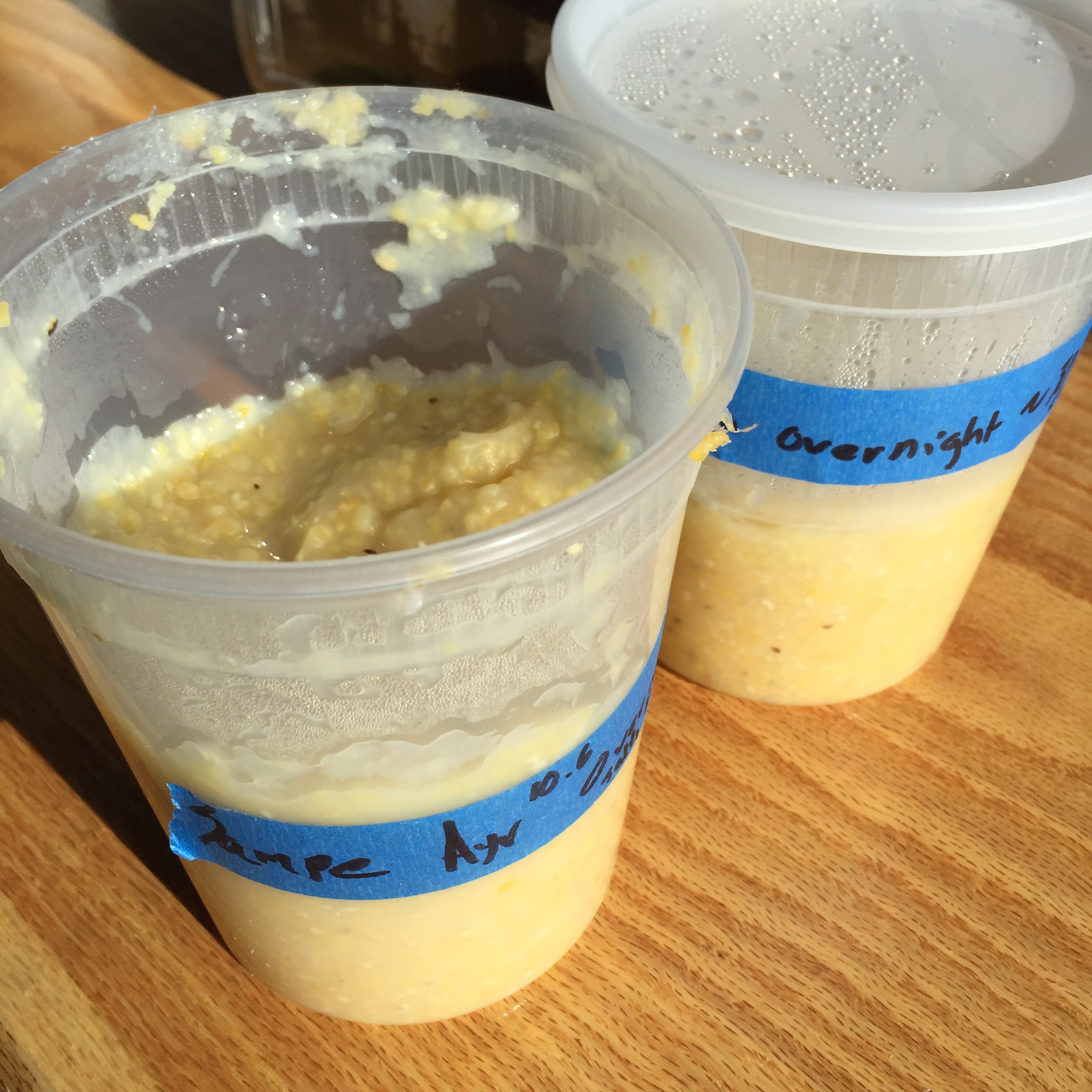I’m playing with a form of northern grits called sampe. Kim Vanwormer, miller at Plimoth Grist Mill, a working grist mill, left us some samples a couple of months ago. I got around to cooking some up last month and was stunned. I’d never had grits or polenta like this. The corn was pretty course, so after a ton of cooking it still had a nice texture. It gets smooth and creamy but with distinct pieces of corn that have a bit of bite.
I WANT TO TASTE SAMPE: Sign up for Food Dev today (free, open to all)
So now I’m playing with this to see if it could work at Clover. It might be an operational nightmare. It requires soaking and long slow cooking. But I’m going to see if I could find a way to work with it. Kim is trying to get farmers in Massachusetts to grow heirloom corn and I’d love to support that. It’s a really special product that I’d love to bring attention to and share. And I think it could help broaden our breakfast menu. It’s delicious sweet (cinnamon, nutmeg, mace, and brown sugar or fruit and honey) and it’s beautiful savory (think cheese, soft cooked egg, and pepper).
There are a full 3 written works from the 1600s mentioning Sampe. Amazing, right? When you think about how littered our world is with recordings of selfies, etc. An entire society, Native Americans in the Northeast, figured out how to use corn as a staple of their diet, and we have a total of 3 European written observations to rely on.
So I’m puzzled, because it appears from these writings that Sampe (which may come from a Wampanoag word that may have meant something like “to soak”) may have originally been corn processed by nixtamalization, a process where corn is soaked (boiled) in Alkaline water to make it more digestible and nutritious. Specifically, this process creates a vitamin we call B3 (Niacin) which is really important for nutrition. Nixtamazliation is THE technology that was responsible for the development of societies in the mesoamericas.
But the Sampe I have from Plimoth is not treated. So I’ve been looking into it, and while I haven’t really found an answer, I have discovered that nixtamalization was definitely known and used in the Northeast United States. That’s amazing! I never knew that. Think Hominey, think Masa. Well native cultures here in New England used the same stuff! They used ash from burning wood. I wonder why that food is absent from our diet? In the South there is a little, at least they know the word Hominy. And down in Mexico, central, and South America there is a ton (masa and derivatives).
Any food historians out there that know more about this?


